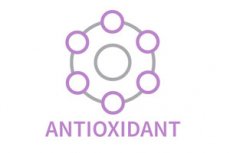Natural antioxidants may slow age-related decline in testosterone production in men
最近審查:14.06.2024

In a recent review published in Nutrients, a group of authors examined the use of natural polyphenolic compounds to enhance testosterone production and prevent age-related hypogonadism in older men.
Androgens are primarily produced by Leydig cells in the testes and are vital for the development and maintenance of male reproductive organs and secondary sexual characteristics.
Testosterone stimulates the development of male reproductive structures in the embryo and plays a key role during puberty, including spermatogenesis and the regulation of gonadotropins.
Testosterone production declines by about 1% per year starting in your thirties, leading to late-onset hypogonadism, characterized by decreased libido, muscle mass, and bone density, among other symptoms.
Further research is needed to fully understand the mechanisms by which polyphenolic compounds enhance testosterone production and to establish their effectiveness and safety as therapeutic agents for the prevention of late-onset hypogonadism in older men.
Biosynthesis of testosterone in Leydig cells Leydig cells are responsible for the biosynthesis of testosterone in the testes. They also produce androstenedione and dehydroepiandrosterone (DHEA), although these hormones are less effective at activating the androgen receptor than testosterone.
Leydig cells contain the enzyme aromatase (CYP19A1), which converts androgens to estrogens, although this conversion is minimal, and estrogens generally moderately regulate steroid production in Leydig cells.
Testosterone biosynthesis is dependent on several steroidogenic enzymes, including cholesterol side chain cleavage enzyme (CYP11A1), cytochrome P450 17α-hydroxylase/20-lyase (CYP17A1), 3β-hydroxysteroid dehydrogenase (HSD3B) and 17β-hydroxysteroid dehydrogenase type 3 (HSD17B3), in this case, cholesterol is the initial substrate.
Cholesterol can be produced from acetyl coenzyme A (acetyl-CoA) or obtained from plasma by receptor-mediated endocytosis of low-density lipoprotein (LDL) particles. Under normal conditions, Leydig cells store cholesterol as esters in lipid droplets and primarily rely on endogenous cholesterol synthesis for testosterone biosynthesis.
The initial step in steroid production involves the translocation of cholesterol into the mitochondria, which is accomplished by a protein complex including the steroidogenic acute regulatory protein (STAR) and the translocator protein (TSPO).
Inside mitochondria, cholesterol is converted to pregnenolone by CYP11A1 with the participation of ferredoxin and nicotinamide adenine dinucleotide phosphate (NADPH): ferredoxin reductase. Pregnenolone then moves to the smooth endoplasmic reticulum (SER) for further conversion to testosterone by HSD3B, CYP17A1 and HSD17B3.
Regulation of steroidogenesis
Steroidogenesis in Leydig cells is primarily regulated by luteinizing hormone (LH), which activates the cyclic adenosine monophosphate (cAMP)/protein kinase A (PKA) signaling pathway, influencing the expression of steroidogenic enzymes. PKA substrates include STAR, which is important for cholesterol transport into mitochondria, and several transcription factors that regulate the expression of steroidogenic genes.
Other signaling pathways such as mitogen-activated protein kinases (MAPKs), protein kinase C (PKC), Ca2+-calmodulin-dependent protein kinases (CAMKs), and Janus kinases/transducer proteins and activators of transcription (JAK/STAT) also play role in this regulation.
Development of late male hypogonadism
Late-onset male hypogonadism is characterized by a decrease in testosterone production with age. This condition is usually treated with testosterone replacement therapy, which can have side effects such as decreased spermatogenesis and fertility due to negative feedback to the hypothalamus and pituitary gland.
Testosterone is important for maintaining muscle mass, bone density, sexual function, energy levels, metabolic health, cognitive function and overall well-being.
As men age and testosterone levels decline, they may develop sarcopenia, decreased bone mineral density, decreased libido, erectile dysfunction, fatigue, and cognitive impairment. Maintaining adequate testosterone levels is essential for the health and well-being of older men.
Natural antioxidants and androgen production
- Flavonoids
Flavonoids are important plant compounds found in various parts of plants. They play a significant role in plant development and protection against pathogens. Flavonoids can be divided into flavanones, flavones, flavonols and anthocyanidins.
They are associated with numerous health benefits, including preventing cancer and reducing the risk of cardiovascular and neurodegenerative diseases. Flavones such as luteolin and apigenin, found in celery, thyme and parsley, may stimulate the expression of steroidogenic genes and enhance androgen production in Leydig cells.
- Isoflavones
Isoflavones such as genistein and daidzein, found in soybeans and chickpeas, may interfere with estrogen signaling in the testicles.
High concentrations of isoflavones may reduce steroidogenesis in Leydig cells. While some studies suggest that isoflavones reduce testosterone levels, others find no significant effects on testosterone levels.
- Flavonols
Flavonols such as quercetin and myricetin, found in berries, apples and tea, improve steroidogenesis and testicular function. Quercetin improves testosterone levels in male mice exposed to endocrine disruptors. However, its effects on testosterone synthesis may vary among species.
- Flavanones
Flavanones, such as naringenin, found in grapefruits, may increase serum testosterone levels and prevent the decline caused by endocrine disruptors.
- Catechins
Catechins found in apples, red wine and tea may increase plasma testosterone levels in male rats. However, some studies have reported that green tea polyphenols inhibit androgen synthesis.
- Anthocyanidins
Anthocyanidins found in berries and grapes are known for their antioxidant and antimicrobial properties. They may improve steroidogenesis by inhibiting Cyclooxygenase-2 (COX2) and modulating the MAPK signaling pathway.
- Hydroxycinnamic acid phenethyl ester derivatives
Hydroxycinnamic acids, such as ferulic acid phenethyl ester, may improve androgen production by improving the expression of genes associated with steroidogenesis in Leydig cells.
- Resveratrol and gigantol
Resveratrol, found in grapes and red wine, improves spermatogenesis and testosterone production, but may inhibit androgen production in some conditions. Gigantol, isolated from orchids, may improve progesterone production and steroidogenesis in Leydig cells.
In conclusion, plasma levels of natural polyphenolic compounds in the low micromolar range can be achieved with a diet rich in fruits and vegetables, supporting optimal Leydig cell function.
Flavonoids with a 5,7-dihydroxychromen-4-one backbone enhance STAR expression and androgen synthesis, indicating possible synergistic effects on steroidogenesis.

